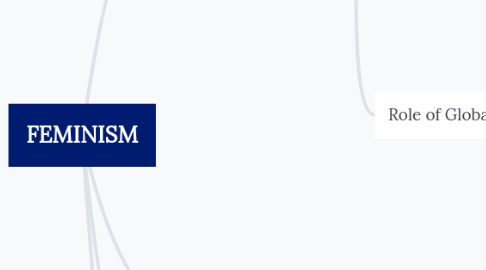
1. Social Change
1.1. New Behaviors Adopted by Society
1.1.1. Increased gender equality in the workplace, politics, and education.
1.1.2. Adoption of policies promoting equal pay, reproductive rights, and protection against gender-based violence.
1.1.3. Adoption of policies promoting equal pay, reproductive rights, and protection against gender-based violence.
1.2. Social Processes
1.2.1. Advocacy and lobbying for legal reforms and policy changes.
1.2.2. Educational campaigns to raise awareness about gender equality and women's rights.
1.2.3. Educational campaigns to raise awareness about gender equality and women's rights.
1.3. Agents of Social Change
1.3.1. Feminist organizations and advocacy groups (NOW - National Organization for Women).
1.3.2. Social media platforms and campaigns (#MeToo, #TimesUp).
1.3.3. Influential leaders and public figures (activists, celebrities).
1.3.4. Academic research and scholarship on gender studies.
1.4. Role of Globalization
1.4.1. Global networks and collaborations among feminist groups.
1.4.2. International treaties and agreements (CEDAW - Convention on the Elimination of All Forms of Discrimination Against Women).
1.4.3. Shared experiences and strategies across borders via social media and digital platforms.
1.4.4. Increased awareness of global gender issues through media coverage.
2. Theoretical Perspectives
2.1. Conflict Theory
2.1.1. The feminism movement fits well within the conflict theory perspective.
2.1.2. It highlights the struggle between women and patriarchal power structures.
2.1.3. Focuses on addressing and rectifying inequalities and power imbalances in society.
3. Collective Behaviors
3.1. Collective Behaviors
3.1.1. Protests and Demonstrations: Marches and rallies like the Women's March.
3.1.2. Social Media Campaigns: Hashtags like #MeToo and #TimesUp to raise awareness and mobilize support.
3.1.3. Public Awareness Campaigns: Educational efforts to inform and engage the public on gender issues.
3.1.4. Grassroots Organizing: Local community groups working on gender equality initiatives.
4. Social Movements
4.1. Type of Social Movement
4.1.1. Reformative Movement: Seeks to change specific laws and policies related to gender equality and women's rights without overthrowing the existing system.
4.2. Theory
4.2.1. Resource-Mobilization Theory
4.2.1.1. The feminism movement effectively utilizes resources such as funding, organizational support, and social media.
4.2.1.2. The feminism movement effectively utilizes resources such as funding, organizational support, and social media.
